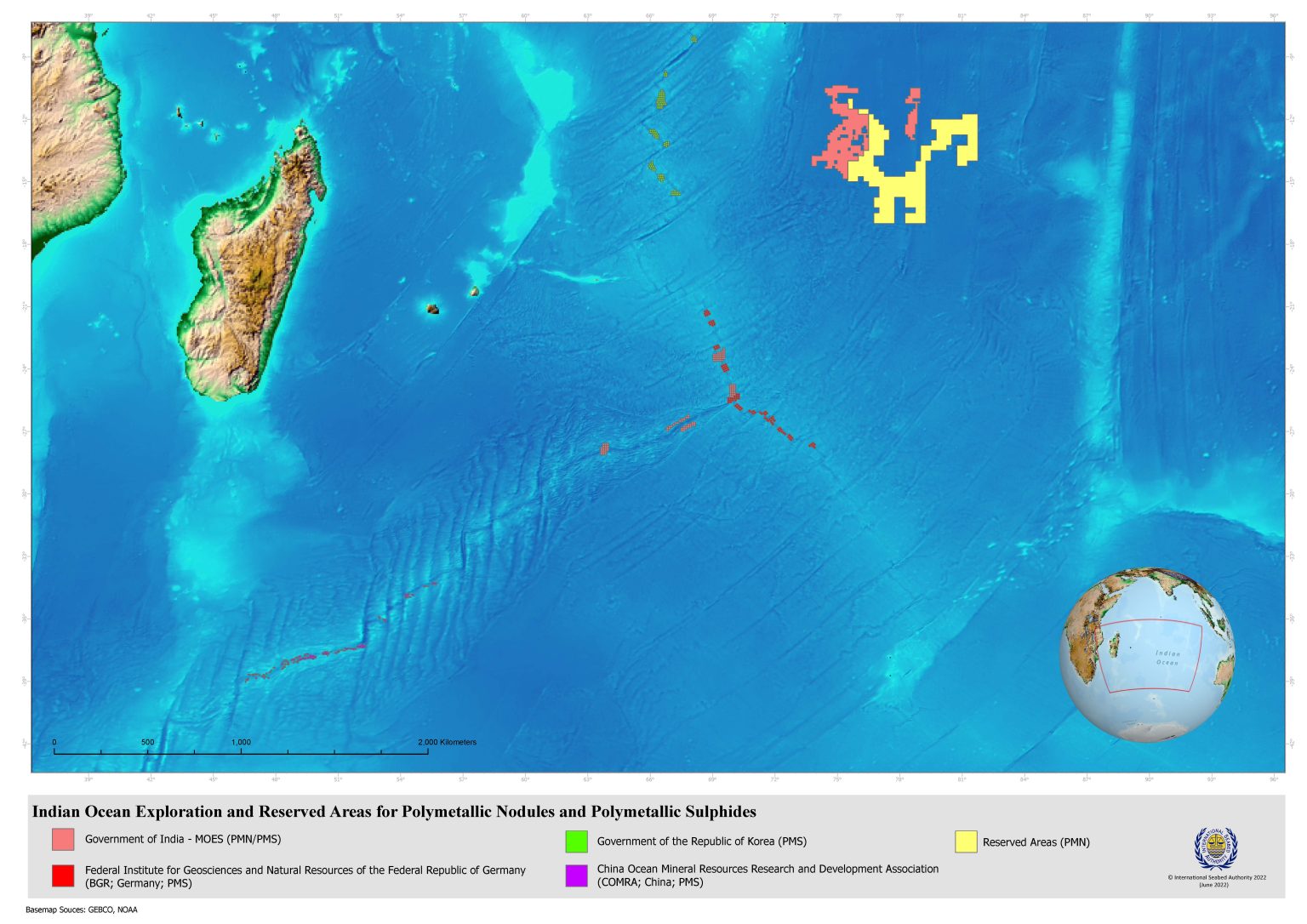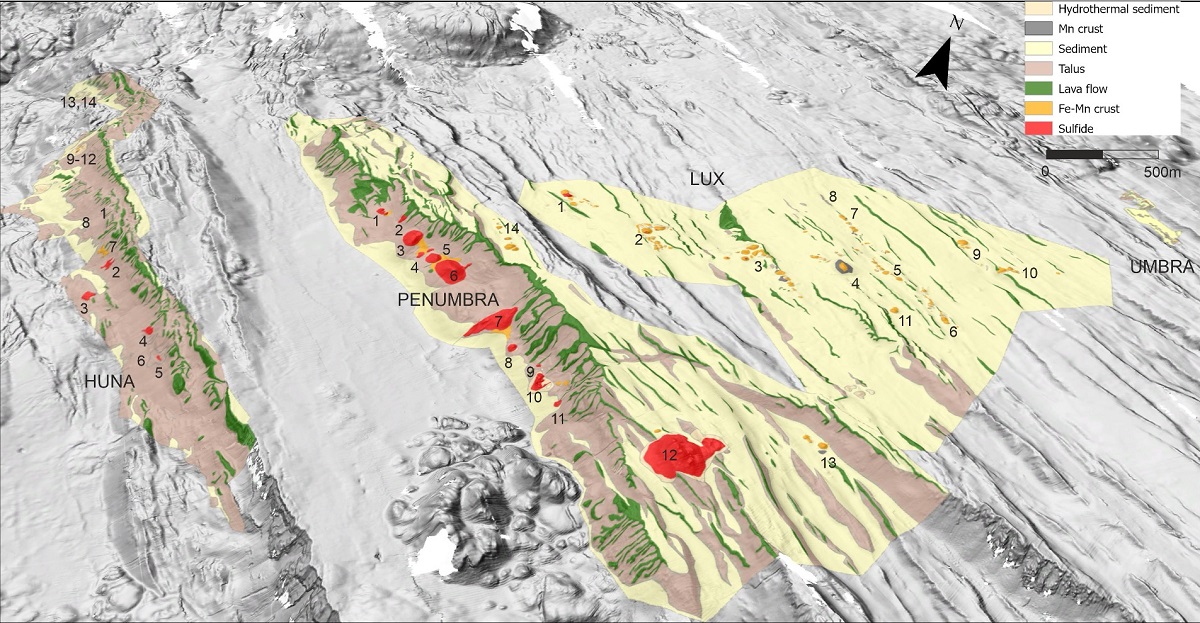As efforts to explore the deep ocean for mineral resources intensify, many are drawn to news about the Clarion-Clipperton Zone in the Pacific Ocean, or the Norwegian exclusive economic zone (EEZ) located in the Norwegian and Greenland Seas.
However, countries such as Japan, China, South Korea, and India are also advancing their knowledge and technologies in preparation for potential mining activities.
While polymetallic nodules have been identified in India’s EEZ (spanning 2,3 million square kilometers), it may be of even greater interest to have a look at the entire Indian Ocean (70 million square km) to get a clearer understanding of the broader mineral potential.
The International Seabed Authority (ISA) governs all international seabed areas outside of national EEZs. In the Indian Ocean, ISA has granted exploration contracts for sulfides and nodules to four contractors: the Government of India, the Federal Institute of Geosciences and Natural Resources (BGR, Germany), the Government of the Republic of Korea, and the China Ocean Mineral Resources Research and Development Association.
Sulfides have been identified along the Central and Southeast Indian Ridges.

Sunil Vadakkepuliyambatta, a scientist at the Indian National Centre for Polar and Ocean Research (NCPOR) will present results from surveys performed on the Central Indian Ridge in 2024 at the Deep Sea Minerals 2025 conference in Bergen in May.
NCPOR utilized Kongsberg’s Hugin AUVs, equipped with advanced sensors, to conduct high-resolution seabed investigations. These surveys revealed multiple active and inactive hydrothermal vent fields.
Notably, an active vent field near the MESO Zone (23°S) was identified, along with evidence of polymetallic sulfides.
The findings from NCPOR highlight the importance of AUV-based exploration in identifying hydrothermal systems, which enhances our understanding of sulfide mineral deposits in the Indian Ocean.
A sulfide district
Sebastian Fuchs from BGR will also be presenting at the conference. Since 2011, BGR has been conducting expeditions along the Central and Southeast Indian Ridges as part of its obligations with the International Seabed Authority (ISA).
Utilizing a wide range of deep-sea technologies, including Autonomous Underwater Vehicles (AUVs) and Remotely Operated Vehicles (ROVs) equipped with various sensors and tools, BGR aims to identify new hydrothermal fields and evaluate their mineral potential.
During expeditions in 2018, 2022, and 2023, four new hydrothermal fields were discovered near the Southeast Indian Ridge. Recent investigations indicate that these fields are genetically connected by an underlying detachment fault and may collectively form a larger mineralized sulfide district.

Furthermore, magnetic data acquired from the two active vent fields exhibit strong negative anomalies at all hydrothermal sites, suggesting the presence of a common hydrothermal system.
Ore samples from both active and inactive chimneys mainly consist of pyrite, Fe-oxyhydroxides, and minor sphalerite (a zinc mineral), with chalcopyrite (a copper mineral) present only in active and recently inactive chimneys. The abundance of chalcopyrite decreases with increasing distance from the ridge axis, pointing to progressive seawater alteration and disconnection from the heat source.
Deep Sea Minerals 2025 will take place in Bergen from 1-3 April. The program and registration page can be found on the conference website.

![window.adn = window.adn || {};
adn.calls = adn.calls || [];
adn.calls.push(function() {
adn.request({
network: "2cddc6",
adUnits: [{
auId: "2e0bfb",
auW: 1230,
auH: 480
}]
});
});
New discoveries in the Indian Ocean](https://geo365.no/wp-content/uploads/2025/03/1000_Vadakkepuliyambatta_Figure-1.jpg)